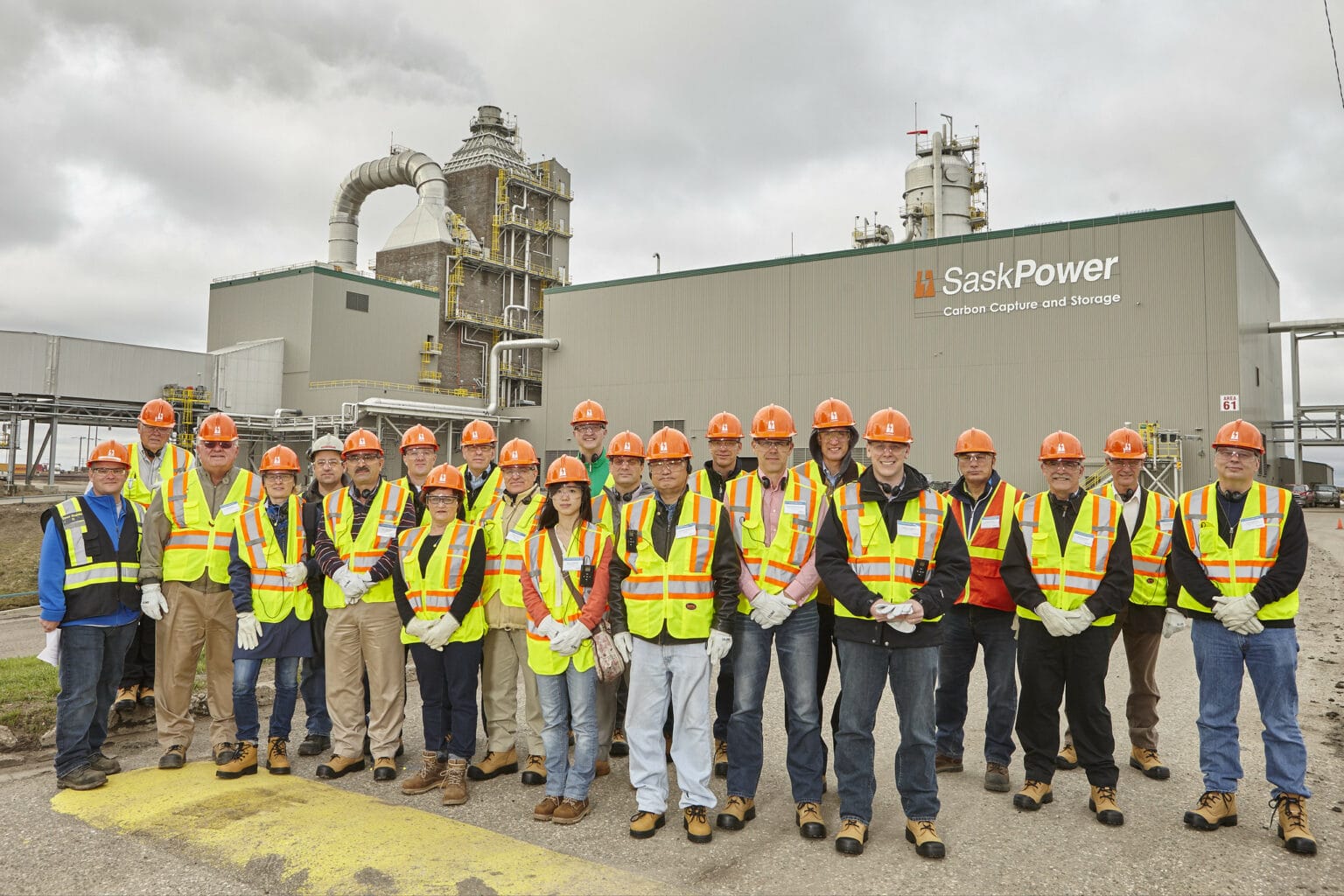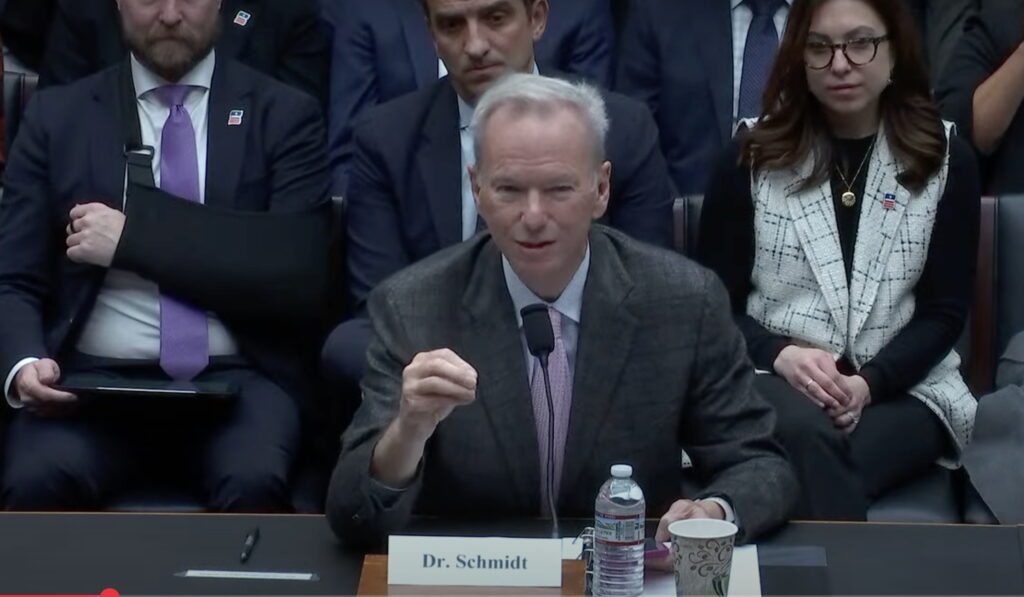The falling cost of wind and solar power significantly reduces the need for carbon capture and storage technology to tackle climate change, a new paper has argued.
CCS, which removes emissions from the atmosphere and stores them underground, has long been presented as critical to restricting global heating to 1.5C by the end of the century.
But a paper published today by Imperial College London’s Grantham Institute finds that rapidly-falling costs in wind and solar energy could “erode” the value of CCS by up to 96 percent.
The authors suggest that targeted, rather than blanket, deployment of CCS is the best strategy for achieving the Paris Agreement goals.
Neil Grant, a PhD candidate at Imperial College who led the research, said the past decade had “seriously changed the game for CCS”.
“While CCS deployment has stagnated, renewables have surged and their costs have plummeted – and so the picture today is very different to what it was in 2010,” he told DeSmog. “Cheap, abundant renewable energy reduces the value of CCS in all areas.”
“Now that renewable electricity is so cheap, this should cause us to seriously rethink the role of CCS.”
Renewables
The authors used Integrated Assessment Modelling (IAM) to explore 1.75C and 2C warming scenarios, restricting the biomass potential in the pathways to “try and limit unsustainable biomass consumption”.
They found that the rate of electrification accelerated faster in the absence of bioenergy with carbon capture and storage (BECCS), with a faster phase-out of unabated fossil fuels in the power sector.
“Wind and solar play a central role in electrifying end-use sectors and accelerating the phaseout of fossil fuels in the power sector if BECCS is unavailable, with deployment accelerating to provide the necessary clean electricity supply,” the authors note.
“In the near-term, the additional demand for clean electricity is met predominantly by solar PV, which provides over half of additional renewable generation in 2030. In the longer term, offshore wind emerges as a key source of low-carbon electricity, meeting 45-60 percent of the demand increase in 2050.”
The paper contrasts zero-carbon electricity such as wind and solar with CCS, observing that CCS development has slowed down in the past 30 years. It concludes that the falling cost of renewables “erodes” the value of CCS between 15 and 96 percent across different energy sectors.
“Cost reductions in renewables enable this highly electrified energy system to be achieved at much lower costs, which reduces the economic value of BECCS to policymakers,” the paper notes.
‘The Right Kind of CCS’
The technology features prominently in the UK’s net zero strategy. The government has committed £1 billion towards a carbon capture, usage and storage (CCUS) infrastructure fund and recently announced the first two carbon capture “clusters”.
A spokesperson for the Department for Business, Energy and Industrial Strategy (BEIS) said CCS “provides a source of flexible, low-carbon power generation which will make an important contribution to our future energy mix, and it will have a key role to play as we move towards net zero”.
The technology has long been touted as an effective means of reducing emissions globally. A special report on CCS by the Intergovernmental Panel on Climate Change (IPCC) in 2018 notes that applying CCS to bioenergy could deliver “negative emissions”, while also highlighting uncertainties around cost and feasibility of the technology.
The Imperial College paper found that the biggest losers to cheap renewables were CCS applied to fossil fuels – used to generate electricity, make hydrogen and to burn in heavy industry such as blast furnaces for steel production.
Grant and co-authors argue that CCS should not be abandoned altogether, but that priority areas for CCS deployment should be to help remove CO2 from the atmosphere, and for capturing CO2 in industry, rather than that applied to fossil fuels.
A number of oil and gas companies have turned their attention to carbon capture in recent years. Earlier this year, US giant ExxonMobil announced a $3 billion investment in new CCS projects over the next five years.
A 2020 report by the Global CCS Institute thinktank noted that CCS is a “versatile and well understood tool in the oil and gas companies’ energy transition toolkit” and its deployment was forecast to “increase significantly to help meet clean growth and decarbonisation goals”.
Oil and Gas Industry
However, Grant argues that oil and gas companies should be asking themselves whether they are investing in “the right kind of CCS”.
“Are they aware that the future availability of CCS, in particular for removals, provides no justification to slow climate action now, and therefore urgent reductions in fossil fuel consumption are required from today?,” he asked.
“Given the level of investment in CCS that oil and gas majors are giving and the fact that much of this is going to natural gas processing, and is explicitly used as a means to justify continued fossil fuel extraction– such as the Gorgon CCS project in Australia — I would say they have a long way to go before their engagement with CCS can be judged to be compatible with 1.5C.”
Ruth Herbert, CEO of the Carbon Capture and Storage Association, which promotes the commercial deployment of CCUS, welcomed the paper’s finding that the priority areas for CCS deployment were carbon dioxide removal (CDR), industrial emissions, and processing emissions from cement production.
“These are areas where CCS provides a unique function, and the direct substitutability with renewables is low,” Herbert said. “This supports CCSA’s view that deployment of CCUS and development of CO2 transport and storage infrastructure should be targeted in the first instance at industrial clusters – regions with high concentrations of industrial emissions that can only be abated through CCUS.”
But she also argued CCUS should be applied to fossil fuel plants too.
“Recognising the key role that CDR will play in other hard-to-abate sectors (such as aviation) and the need for some flexible firm power to enable a greater deployment of renewables for electricity generation, we are also keen to see CCUS projects move forward in these applications, given the pace of scale up required to meet net zero by 2050.”
UPDATED 22/11/21: Updated to include response from the Department for Business, Energy and Industrial Strategy.
Subscribe to our newsletter
Stay up to date with DeSmog news and alerts







